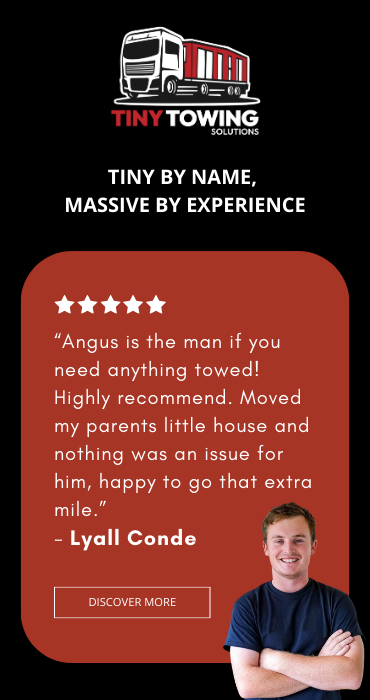Retirement should be a time of peace and calm – a time to enjoy life without the stress of work or raising children. However, as living costs continue to rise, more and more people worry about how to make retirement work financially.
For those renting or still paying off their mortgage, those expenses are often the biggest burden. Even if you're fortunate enough to have paid off your home completely, you may still be considering ways to access some of the equity tied up in your property.
Others might be financially sorted for retirement but are burdened by maintaining a large home, and are looking for ways to simplify life. With all of this in mind, it’s probably no surprise that more and more people are considering tiny house living as part of their retirement plan.
Tiny houses on wheels (THOWs) are generally more affordable than a normal home – both in terms of purchasing cost and ongoing expenses. Therefore, a tiny could be a path to homeownership for people who can’t afford to purchase and pay off a traditional home before reaching retirement age.
Many people also like how living tiny simplifies life. Less living space means less stuff, less cleaning and less to maintain. As we get older, this simplified lifestyle can be particularly attractive. After all, who wants to be responsible for cleaning and maintaining a big four-bedroom family home when you don’t actually need all that space anymore?
However, while retirement in a tiny house has many benefits, there are a few things you want to consider carefully before jumping in.
How will you finance your tiny home?
While tiny homes are generally cheaper than traditional houses, high-quality ones still come with a decent price tag. Furthermore, with them being a minority housing solution, getting a loan can be tricky, especially when you’re not generating income anymore (or approaching that stage of life).
Those who can sell a fully paid-off house will generally find they have more than enough for a tiny home on wheels. However, if you’re not in the lucky position to have a home to sell or enough cash in the bank, you might find it’s not that easy to make the tiny retirement dream come true.
If retirement in a tiny house is something you’re considering, start talking to a financial advisor about it to see if it’s an option and what you can do to make it happen.
What laws and legislations might impact your plan?
Legally speaking, tiny houses on wheels continue to operate in a grey zone in New Zealand. There are no specific legislations yet around what you can and can’t do as far as tiny houses are concerned. Most of the time, it’s not as easy as finding a nice spot for the tiny and living happily ever after. Many local councils are cautious about tiny houses, and you might find that you need building or resource consent to park your tiny where you want to live – which can be tricky and expensive.
Of course, this applies to anyone, not just those considering tiny living as part of their retirement. However, this level of complexity and uncertainty can be harder to deal with as we get older.
Before committing to retirement in a tiny house, ensure you understand the legal situation. Several resources on the Tiny House Hub website discuss the legalities in more detail, and it’s also recommended to talk to your local council about your plans before making any commitments.
Where will you base your tiny house?
The next big question you want to consider is where you will base your tiny house.
For most, the ideal scenario is probably to park on their own or family land. For example, if a relative has a big enough property, a tiny house can be an excellent way to be close to family while still having your own space. However, make sure you think – and talk – through the details of this arrangement with all parties involved to ensure everyone is on the same page regarding financial contributions, privacy, and shared spaces and activities.
If living in your tiny on land you or your family own is not an option, you want to think carefully about the implications of this. While leasing land is a common option for tiny house on wheels, it does come with a level of uncertainty. You never know when the landowner might decide to terminate the lease agreement. One of the great things about tiny houses on wheels is that they can be moved. However, finding new land where you want to live can be a challenge, and transporting a tiny home can be a lot of effort and comes with cost.
Of course, being asked to move can also happen when renting. However, generally speaking, it’s easier to get a moving company to pack and move your belongings from one apartment to the next than having to deal with the stress of finding new land to lease and then organising the relocation of the tiny house.
How will you age in your tiny?
If you’re considering spending your retirement in a tiny home, it’s really important to think through how you will age in your tiny. Let’s be honest, no one likes the idea of getting old, needing help, and not being as capable anymore. But it’s part of life – so we might as well plan for it.
Think about how the tiny house will work for you when you’re not as mobile anymore. Will a sleeping loft still work when you’re 75 or 80? Will you be able to reach things in cupboards high up or down low? Do you need to be able to fit a stool in the shower?
And what about amenities in the area? Will it be easy enough to do your grocery shopping and see the doctors? Will you be able to park close enough so that carrying in groceries won’t be an obstacle?
These are just some of the questions you want to consider when planning your tiny retirement. Only you know what’s right for you. Much of what we’ve discussed applies to anyone considering getting a tiny house, not just those who want one for retirement – though maybe to a different extent, as it’s generally easier to take risks when we’re younger. Despite their many advantages, tiny houses are still a niche housing solution. As such, they come with a higher level of uncertainty and risk than traditional options. For some, that makes them exciting and fun. For others, it makes them a risk not worth taking. Which camp you fall into is a question only you can answer.


